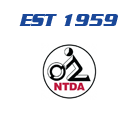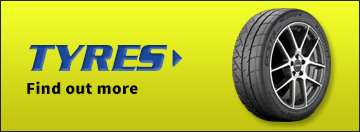Dangers of buying part worn tyres
Part Worn Tyres – Facts You Need to Know
- Are you aware that in the event of an accident, insurance companies may not cover your vehicle if it is fitted with part worn tyres?
- Are you aware that tyres often wear out their thread more quickly once they are half worn?
- Are you aware that many part worn tyres are sold illegally as they do not conform to the relevant testing, inspection and marking laws?
- are you aware that part worn tyres often have as little as 4mm of thread remaining, with UK legal limit of 1.6mm, a part worn tyre with 4mm has already utilised 62% of its legal thread life?
- The question must be asked, why was the part worn tyre removed from another vehicle in the first place?
- Fitting a part worn tyre to your car can be dangerous as many of these tyres are not tested. Of the 100 part worn tyres inspected in a recent survey by Birmingham City council all had faults and were not fit for use!
- If you fit part worn tyres to your vehicle you could be endangering yourself, your family and others on the road!
Do We Need Controls
Work carried out in the past by trading standards officers has shown that the sale of part-worn tyres can be a particular problem. A survey revealed that one in three of the part-worn tyres purchased for the survey was found to be defective.
If a Trader Supplies an Illegal Part-Worn Tyre
It is a criminal offence to supply (which includes offering, agreeing, exposing or possessing for supply), a part-worn tyre which does not meet the requirements. Any trader breaching the controls is liable to prosecution. The maximum penalty on summary conviction is a fine of £5000 and/or six months imprisonment. In addition offending tyres are liable to seizure and forfeiture.
Part Worn Tyres Must NOT Have Any of The Following Defects:-
- any cuts bigger than 25mm or 10% of the section width of the tyre – measured on the outside and deep enough to reach the ply or cord
- any internal lump, bulge or tear caused by separation or partial separation of the structure
- any of the ply or cord exposed internally or externally
- any penetration damage which has not been repaired
NOTE – The tyre must not exhibit any of the above defects when inflated to the highest pressure at which it is designed to operate
Tread
- The grooves of the original thread pattern of the tyre must be of a depth of at least 2mm across the full breadth of thread and round the entire outer circumference of the tyre.
Marking
- If the tyre has not been retreaded it must bear the relevant APPROVAL MARK, a speed category symbol and the load – capacity index OR
- If the tyre has been retreaded it must bear the mark BS AU 144b, BS AU 144d, BS AU 144e AND
- Immediate next to the mark referred to above, the tyre must bear the words PART-WORN in capital letters at least 4 millimetres high. This mark must, be permanently and legibly applied to the tyre but NOT by hot branding or otherwise cutting the tyre
Repairs
- Any repairs must have been properly carried out to the standard required by BS AU 159f: 1997. This requires all puncture repairs to be filled externally in addition to being patched internally
There are some limited exceptions that apply in particular circumstances but in general all part-worn tyres for supply must meet the above requirements.
What Should a Trader Do To Comply with the Law
All sellers of part worn tyres should take positive steps to ensure that all part-worn tyres they stock for supply meet the requirements of the regulations.
Check the condition of the whole tyre, (this will mean taking it off the rim to examine internal surfaces), if it is not up to standard, or if you have any doubts, reject it. Though not required by regulations it would be advisable to positively mark such tyres as rejected. This could help avoid confusion or mistakes.
Ensure that all relevant staff are made aware of these requirements.
REMEMBER
- The responsibility is yours
- Trading Standards Officers will carry out checks
- Action will be taken against traders found to be in breach of the controls
Regulations 1994 SI No. 3117






